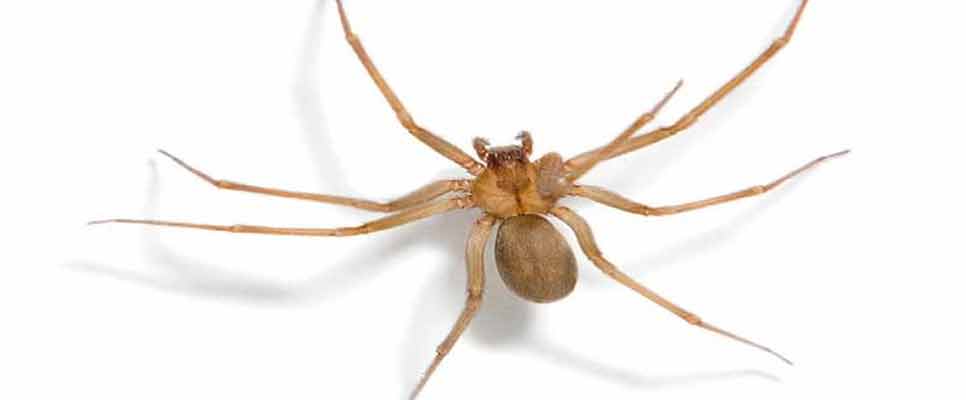Many different varieties of spiders, you may see in Brisbane, Australia. So, it becomes your responsibility to keep your home. You should get information about the different spiders. Because they can be at times dangerous if they live in your home and garden. Having information about different spiders may be helpful for you. With this, you keep your home safe and protected from venomous spiders. Even though most of them are harmless and play significant roles in insect population management, it is necessary to be aware. In this blog, we have mentioned a few types of common spiders, available in Australia. So, read carefully to collect information about spider appearance, behaviours, and the possible dangers that may cause.

Spiders in Brisbane
Before you deal with any kind of spider you must have proper information. So, here it is;
Huntsman Spider (Sparassidae)
Appearance: Huntsman spiders are notable for their huge size, with leg spans frequently between 1 and 5 inches. People may see huntsman spiders in numerous colours such as brown, grey, and cream. As well as they have flattened bodies and lengthy legs. These spiders can move fast and have recognisable flattened bodies.
Behaviour: Huntsman spiders may be found both indoors and outdoors, particularly in shrubs and under bark. There is no evidence that huntsman spiders pose major problems for people. They may terrify humans with their sudden appearance, although their primary food source is insects.
Orb-Weaving Spider (Araneidae)
Appearance: Spiders that weave orbs, you can recognise them by their intricate webs in the form of wheels. According to the search, they appear in many different kinds of forms. They are visible in silver, brown, and black. Their bodies are generally tiny, measuring between 1/4 and 1 inch.
Behaviour: These spiders frequently inhabit gardens, woodlands, and bushes. Orb-weaving spiders are not thought to be dangerous to humans, despite the size and majestic structure of their webs. Their main food source is flying insects that get caught in their webs.
St. Andrew’s Cross Spider (Argiope keyserlingi)
Appearance: St. Andrew’s Cross spiders may be recognised by their enormous, vividly coloured black and yellow abdomens. They acquire their name from the X-shaped design they weave on their webs, which resembles a St. Andrew’s cross. A spider female’s body length is larger than a man’s body.
Behaviour: These spiders construct enormous, tall webs close to gardens and bushes. St. Andrew’s Cross spiders are not hazardous to humans, despite the fact that their size may make them seem threatening. The majority of the flying insects that they eat are trapped in their webs.
Redback Spider (Latrodectus hasseltii)
Appearance: The redback spider is small, measuring around 0.12 to 0.2 inches in body length. Females are easily recognizable by their black bodies with a distinctive red or orange stripe on their abdomen. Males are smaller and less conspicuous.
Behaviour: Redback spiders are notorious for their venomous bites. And, some people may experience pain and discomfort, and fatalities if they come into contact with a redback spider. Also, you can find these spiders in dark, sheltered areas like sheds, garages, and outdoor toilets.
Daddy Long-Legs Spider (Pholcidae)
Appearance: Looks like Daddy Long Legs. A spider’s body you may notice with a length of 0.1 to 0.2 inches. They are often light brown or grey in colour and have long, delicate legs.
Behaviour: These spiders are typically discovered inside, particularly in damp, dark spaces like bathrooms and basements. Daddy long-leg spiders eat mostly insects and are not harmful to people. But still, you should be aware that these spiders can cause itchy skin. They are well-known for moving their legs quickly and for vibrating when startled.
Golden Orb Weaver (Nephila edulis)
Appearance: Golden orb weavers are huge spiders, with females having bodies that are at least one to two inches long. Their robust, golden webs and vivid yellow or reddish-brown abdomens make them simple to identify.
Behaviour: In gardens and forests, these spiders spin magnificent, robust webs. There is no danger to people from aggressive golden orb weavers. They are a crucial part of the ecology in regulating pest populations because they predominantly capture flying insects.
Wolf Spider (Lycosidae)
Appearance: Wolf spiders often have a brown or grey, hairy look. Depending on the species, their body lengths vary from 0.4 to 1.4 inches, making them medium-sized. They have an unusual arrangement of eyes.
Behaviour: Wolf spiders, you may find in gardens, meadows, and forested regions. They usually dwell in, so-called ground-dwelling spiders. They hunt actively and don’t use webs to ensnare prey. Despite their size and scary look, wolf spiders are not dangerous to people and are useful for reducing the number of problem insects.
Pro Advice For a Better Life Without any Spiders or Pest In Your Home
Although Brisbane residents frequently come into contact with spiders, the majority of them are benign and help to keep the ecosystem in balance by managing insect numbers. To prevent potentially deadly interactions, it is essential to be aware of a few poisonous species, such as the redback spider. For a safe and knowledgeable way to deal with these interesting arachnids, call for professional help. We highly advise you to always hire local pest controllers if you see a spider infestation. Spider Control Professionals will tackle the infestation with an expert spider removal service. So, arrange a booking for the complete spider removal from your home.
Published on: December 21, 2023
Last updated on: December 23, 2023
